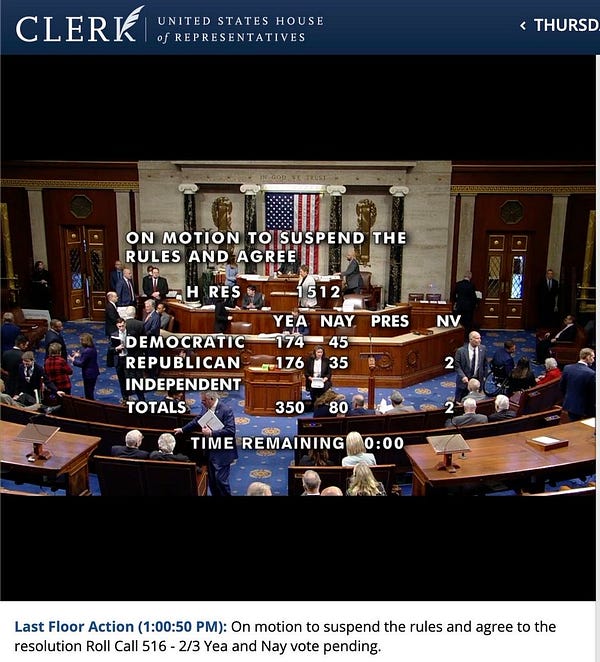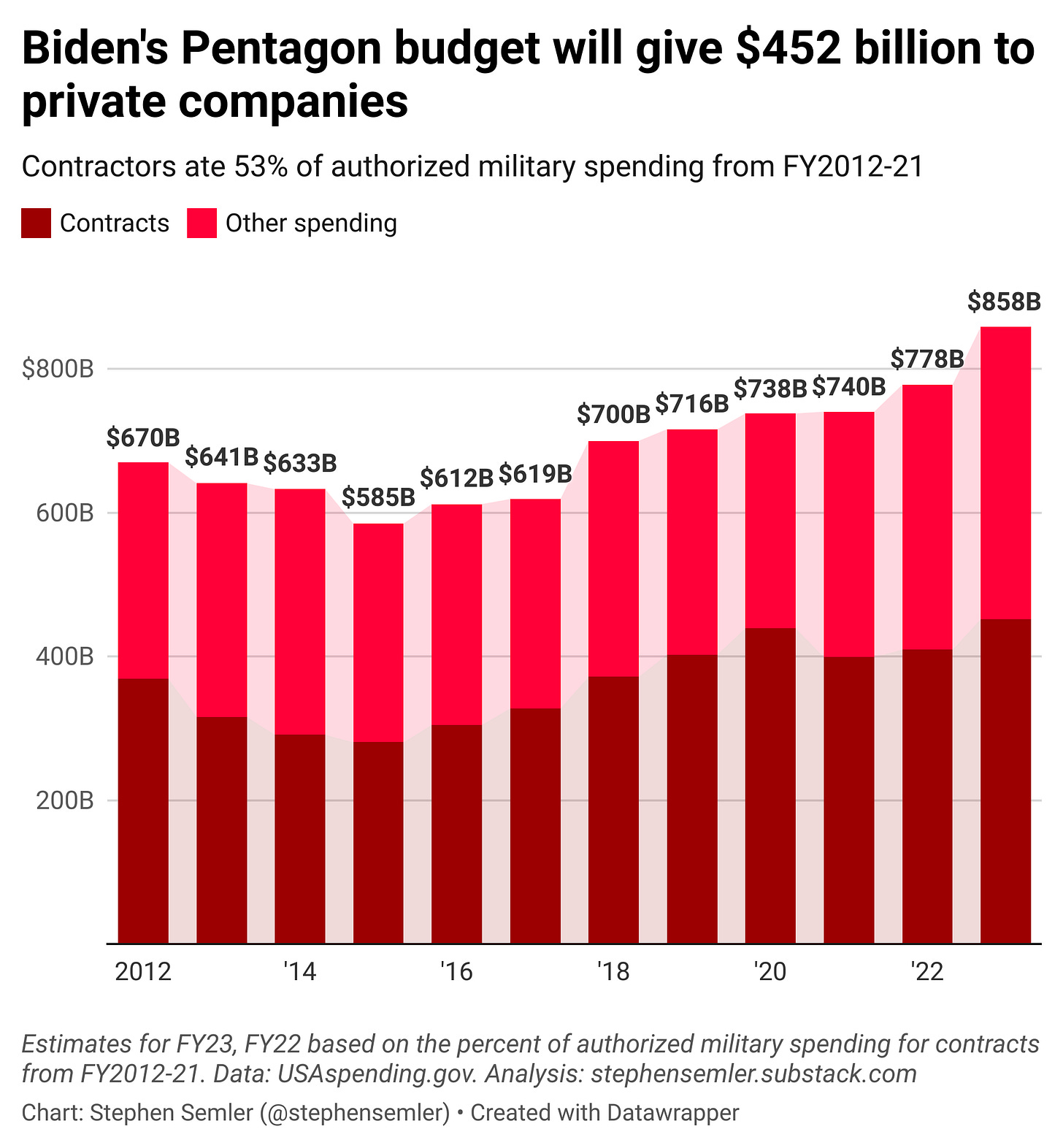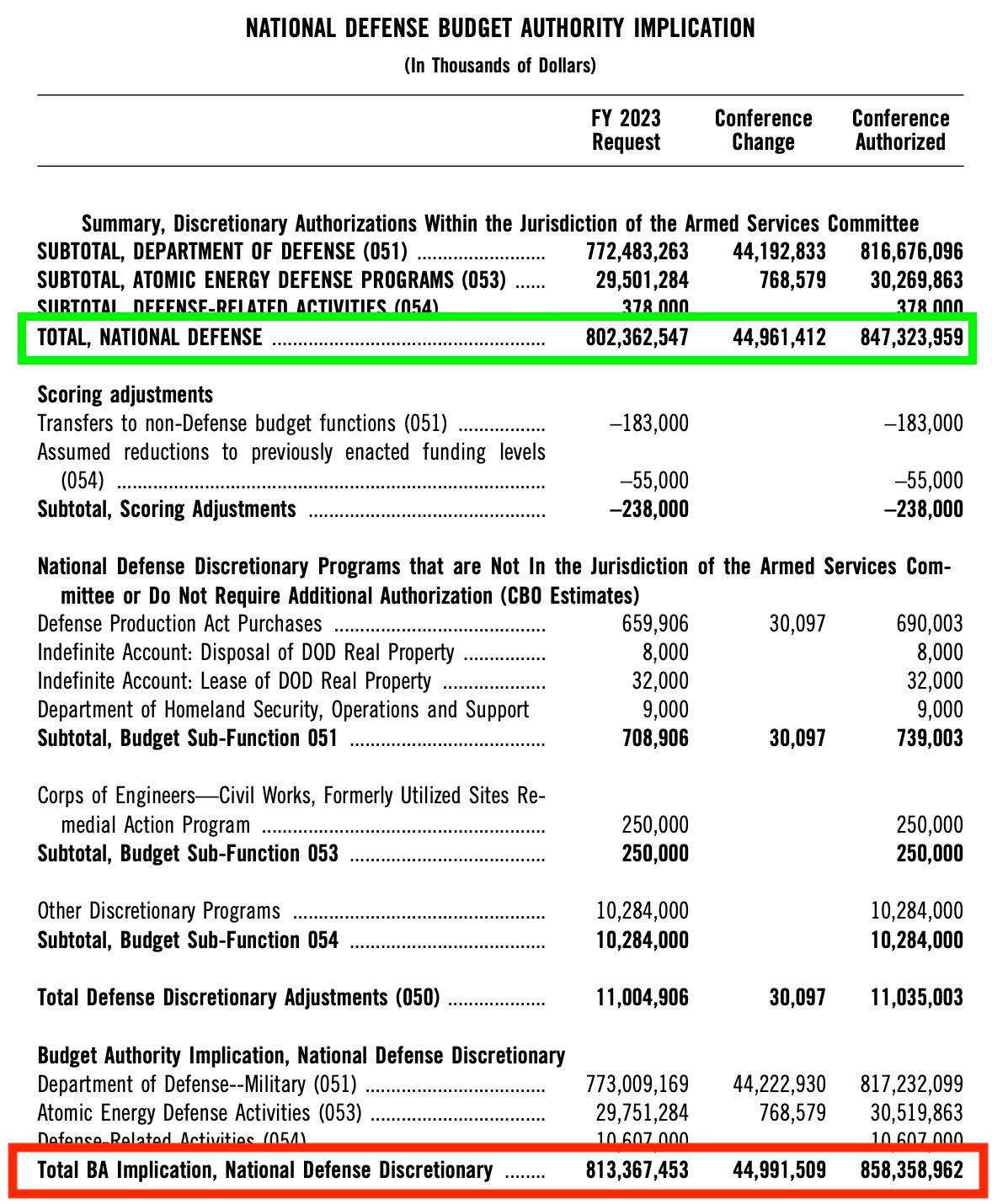The House just authorized $858 billion for the Pentagon by passing the FY2023 NDAA. That’s $80 billion higher than FY22, and $118 billion higher than when Biden entered office.

House authorizes $858B for the Pentagon
By Stephen Semler Substack Speaking Security Newsletter |
Note n°183 | 8 December 2022
Situation
The House just passed the National Defense Authorization Act (NDAA), which gives the Pentagon the authority to spend $858.4 billion in fiscal year 2023. That’s $80.4 billion more than the amount authorized by the FY2022 NDAA, and a $117.9 billion increase over the FY2021 bill Trump signed into law.
Adjusted for inflation, FY2023 looks like it’ll have the fourth-highest military budget since World War II. The only time military spending has been higher in real terms was the stretch between 2008–2011, when there were no fewer than 141,000 US troops in Iraq and Afghanistan.
It might end up with the highest once supplemental funding is included. That’s my bet, at least. It would take another $66 billion in FY2023, and $10 billion has already been enacted for Ukraine, with another $23 billion in military aid on the way from an aid package that’s likely to be approved by the end of the month.
Privatizing public funds
Military spending is fundamentally a redistribution of wealth. This is why the arms industry spends so much money on things like lobbying, campaign contributions, and think tanks—they’re all useful in helping drive up funding for the Pentagon, and that means more money for them.
How much of the $858 billion authorized by the FY2023 NDAA will be transferred to military contractors? I estimate $452 billion.
I arrived at this figure by first comparing the amount authorized by the ten NDAAs from FY2012 through FY2021 with the amount of contracts obligated by DOD in each of those (fiscal) years. The share of total authorized spending that went to contracts (53 percent) is the figure I used to project FY2023’s total (and also FY2022’s—the federal dataset is still being populated for that year).

Note
You may have come across reports that the FY23 NDAA is $847 billion. That’s the amount authorized by the bill itself. If you add that amount to the Pentagon programs that are already authorized or are outside the jurisdiction of the armed services committees, you get $858 billion. In other words, it’s the amount in the bill versus what the bill does to the overall amount authorized for military programs. I don’t see the point in reporting the former ($847B, in this case) to a general audience instead of the topline number ($858B). Both numbers are correct, though, and you can look at them on page 400-something of the NDAA’s joint explanatory statement.

-Stephen (@stephensemler; [email protected])
Find this note useful? Please consider becoming a supporter of SPRI. Unlike establishment think tanks, we rely exclusively on small donations.
Speaking Security
Rise Up Times, Media for Justice and Peace
Read. Share. Donate.
If you prefer to write a check please click on the About/Donate section in the black bar menu at the top of the page.
The contents of Rise Up Times may or may not reflect the views of the editor.
Image by One More Time



